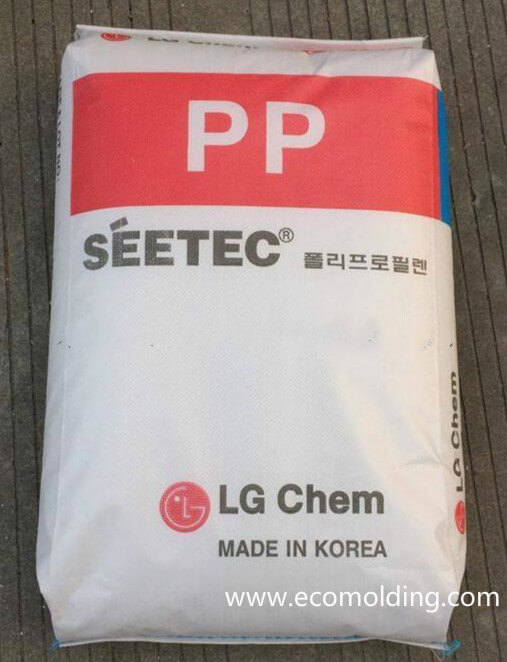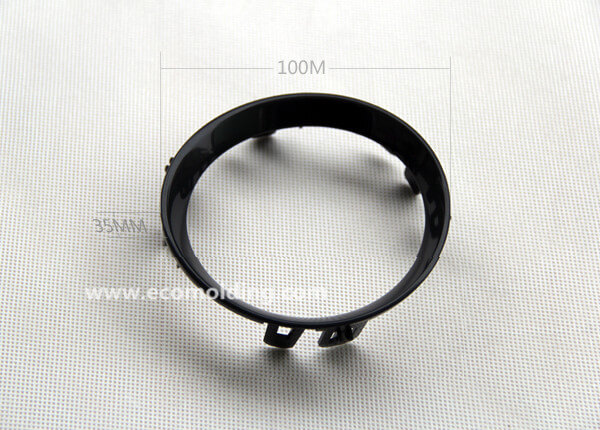What Is the Polypropylene (PP) injection molding Material ?
Polypropylene/PP injection molding material is a plastic polymer made by combining several propylene monomers. It is widely used in food containers due to its safety, as it is free from BPA. This thermoplastic polymer features a wide range of applications that include packaging of consumer products, plastic components for such industries as the automotive industry. Relatively speaking, the surface of the PP plastic is very slippery, so in some low-friction applications, it can be used to replace some plastics like polyacetal (POM), or used as a contact point for furniture. One of the weaknesses of this property might be that it is not easy to adhere PP to the surface of other materials (it does not bond ideally with certain types of glues, so sometimes it needs to be welded when it is required to form a joint). PP is slippery at the molecular level, but it has a relatively high friction coefficient. As a result, POM, nylon or PTFE will sometimes be used instead of it. When compared with other common plastics, PP also has a relatively lower density, meaning weight reductions for producers and sellers of injection molded PP products. The features described above and below demonstrate that the PP material can be used in a great number of applications: safe plates of a dishwasher, food trays and cups, etc., as well as opaque to-go containers and an extensive range of toys.


Conditions of the Polypropylene PP Injection Molding Process
| Dry | Usually unnecessary when properly stored |
| Melting Point | 220 – 280 degrees Celsius (428 – 536 degrees Fahrenheit); no higher than 280 degrees Celsius |
|
20 – 80 degrees Celsius (68 – 176 degrees Fahrenheit); suggested: 50 degrees Celsius (122 degrees Fahrenheit). The mold temperature is the factor that determines the crystallinity level. |
|
|
Plastic Injection Molding Pressure |
As high as 180 MPa |
Plastic Injection Molding Speed
Generally speaking, for PP injection molding process, a fast speed is usually adopted to keep the internal stresses at the lowest possible level; in case of surface defects, it is preferred to use a slower molding speed at higher temperature conditions. It is strongly recommended to employ machines that are able to provide profiled speed.
Runners and Gates
With regard to the cold runner molds, the commonly used diameters is between 4 to 7mm. We recommend the application of full round sprues and runners. It is OK to employ all types of gates. Typically, the diameters of a pin gate is set between 1 to 1.5mm, but it is also possible to use diameters of as low as 0.7 mm. When it comes to edge gating, the depth of the gate should be kept no lower than half of the wall thickness, but it should be at least twice as wide as the thickness. On the other hand, the hot runner molds are able to be directly used for the PP injection molding.
The injection mold design is crucial for efficient production in the polypropylene injection molding process.
What Advantages Does Polypropylene PP injection molding Have?

Injection molding polypropylene is easy to access and not expensive.
PP possesses a high flexural strength by virtue of its semi-crystalline property.
PP is characterized by a relatively slippery surface.
PP is rather resistant to moisture absorption.
PP is chemically resistant to an extensive range of bases and acids. Despite this, its chemical resistance has limitations, particularly with substances like chromic acid. Additionally, PP’s low melt viscosity provides advantages in injection molding, facilitating quicker mold filling and reducing cycle times and costs.
PP is very resistant to fatigue. The use of living hinges in polypropylene injection molding showcases the material’s durability and ability to mold thin features effectively.
PP possesses great resistance to impact.
PP can act as a great electrical insulator.
What Disadvantages Does Polypropylene PP injection molding Have?
PP has a high thermal expansion coefficient which limits its high temperature applications.
PP is sensitive to UV.
PP is not strongly resistant to chlorinated solvents and aromatics. Compared to other plastics, PP’s resistance to these chemicals is relatively lower.
It is not easy to paint on PP, due to its poor bonding properties.
PP is highly flammable.
In spite of its weaknesses, PP is still a great injection molding material. It features a diversity of unique qualities that cannot be found in any other materials, making it an ideal choice for a diversity of application projects.
What Properties Does Polypropylene Have?
When producing polypropylene plastic through PP injection molding, propylene polymerization is performed by involving stereospecific catalysts. Usually, it is isotactic PP that is produced (the methyl groups is lying on one side of the carbon chain). Due to the ordered molecular structure, this linear plastic is semi-crystalline, which is stiffer and has a higher melting temperature than PE. The PP homopolymer will become fragile when the temperature is higher than 0 degrees Celsius (32 degrees Fahrenheit). For this reason, many grades of PP available in the market are random copolymers with 1 – 4% ethylene or block copolymers with a higher ethylene proportion. Copolymers possess a lower heat distortion temperature (approx. 100 degrees Celsius / 212 degrees Fahrenheit), less clarity, surface gloss and rigidity, but a greater resistance to impact. When the ratio of ethylene increases, this material will become tougher and tougher. Its Vicat softening temperature is about 150 degrees Celsius (302 degrees Fahrenheit). For these materials, the surface hardness and resistance to scratch are higher thanks to the higher levels of crystallinity.
The PP plastic is not prone to stress cracking. It is usually adjusted by adding glass fibers, mineral fillers or thermoplastic rubbers. The melt flow rate of the PP material ranges between 1 and 40; materials with a lower melt flow rate feature a better resistance to impact but a lower tensile strength. When compared with homopolymer of the same melt flow rate, the copolymer appears to be tougher. Its viscosity leads to more shear, while being more temperature sensitive than PE.
By virtue of its crystallinity, the shrinkage rate of PP is quite high (0.018 – 0.025 mm/mm or 1.8 – 2.5%), but its shrinkage is more uniform than that PE-HD (the variance in flow and cross-flow shrinkage is usually lower than 0.2%). Increase of glass by 30% is helpful with reducing the shrinkage rate to about 0.7%.
Both the homopolymer and copolymer PP injection molding materials are strongly resistant to moisture, as well as chemicals like acids, alkalis and solvents. But, it does not offer excellent resistance to aromatic hydrocarbons, like benzene, as well as chlorinated hydrocarbons, like carbon tetrachloride. And, under high temperature conditions, its resistance to oxidation is not as strong as that of the PE plastic.
